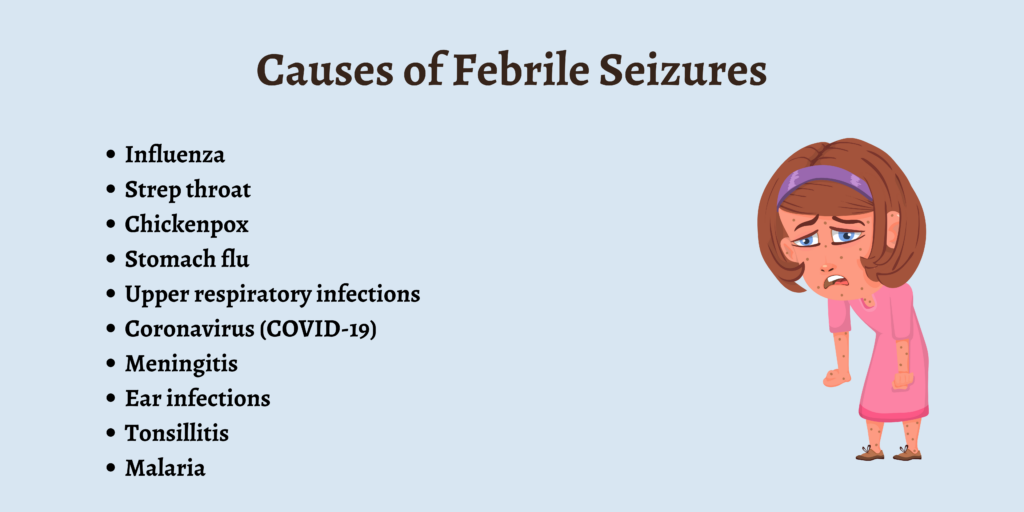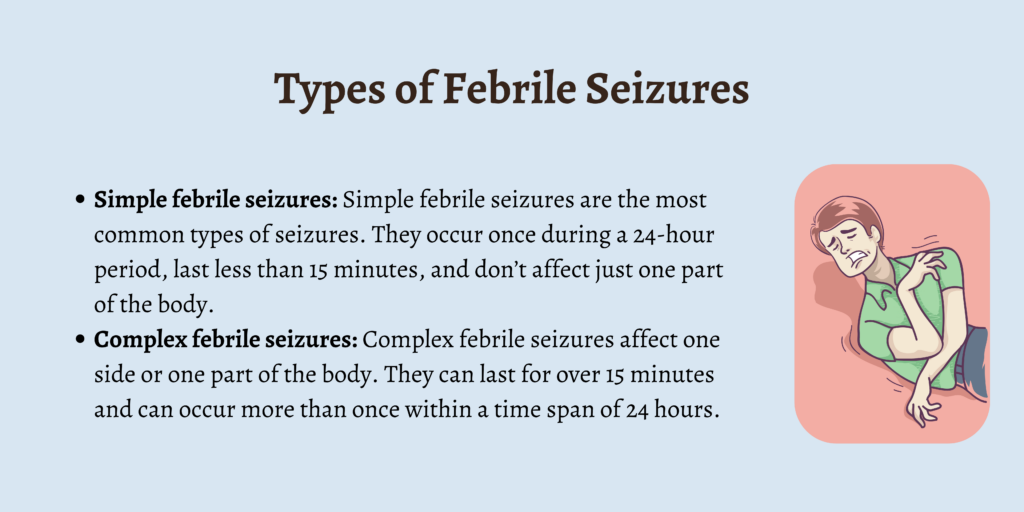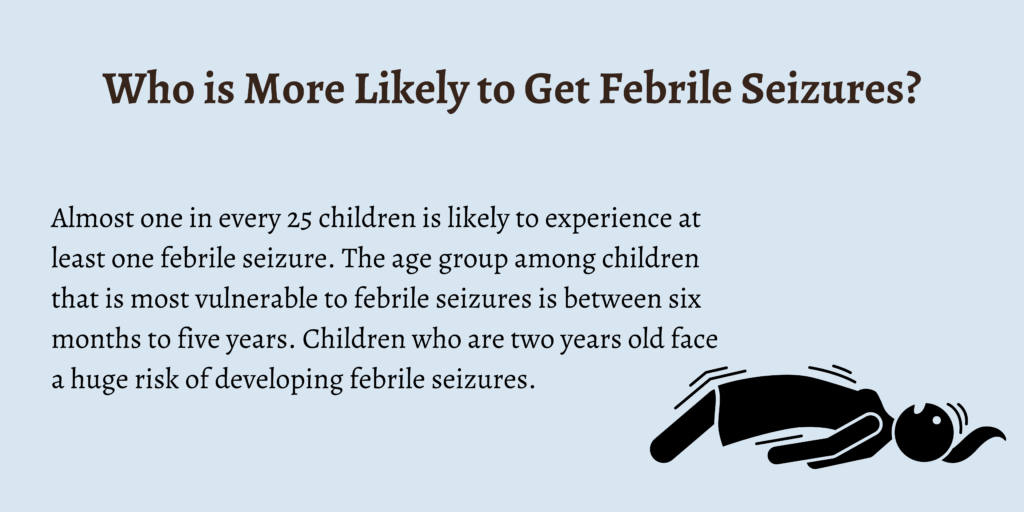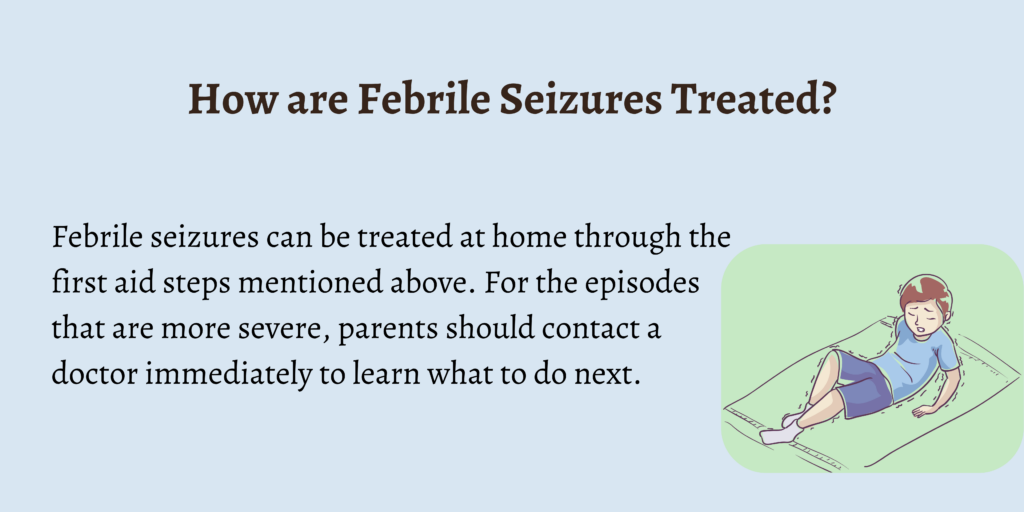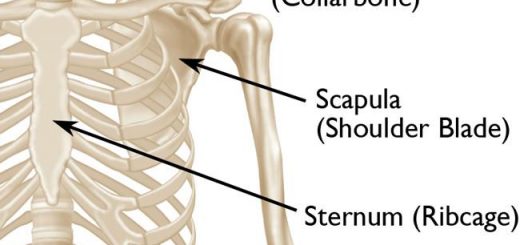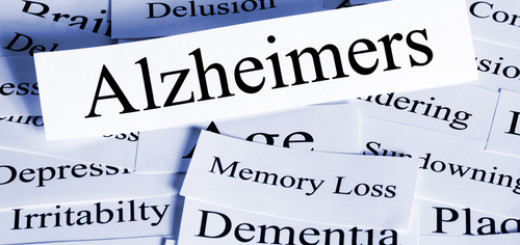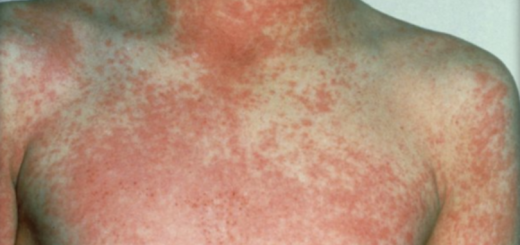What are Febrile Convulsions?
Febrile seizures are a relatively common childhood condition, referring to a child having a seizure when they have a high temperature most usually as a result of an infection.
Although febrile seizures may be very frightening, most are harmless and do not pose a direct threat to a child’s health.
Most children have what is known as a tonic clonic seizure. During a tonic clonic seizure, the child’s body becomes stiff, they lose consciousness and their arms and legs twitch. Some children may also wet themselves.
Febrile seizures are quite common with an estimated 1 in 20 children having at least one febrile seizure at some point. Most febrile seizures occur between the ages of six months and three years with the average age being 18 months.
The actual cause is unknown, although the condition appears to run in some (but not all) families. Around 1 in 4 children who are affected by febrile seizures will have a family history of the condition; however in half of all cases, there are no obvious causes or risk factors.
Many parents worry that if their child will develop epilepsy when they get older. While it is true that children who have a history of febrile seizures may have an increased risk of developing epilepsy, it should be stressed that the risk increase is still quite small.
Febrile convulsions or febrile seizures are seizures that occur in children due to a fever that is usually above 38.3 degrees Celsius. Some of the illnesses that can lead to such seizures are ear infections, the flu, or a cold.
In certain situations, children don’t have a fever during the time of the seizure but develop one a couple of hours later.
Febrile seizures are often seen in young and healthy kids whose growth and development are normal and the ones who haven’t ever experienced any neurological symptoms.
A child developing a febrile seizure can be a scary situation, but it isn’t something to worry about, as the seizures don’t last for more than a few minutes and are typically harmless.
In this article, we will be discussing the symptoms of febrile seizures, their types and causes, and how they can be diagnosed and treated.
Causes of Febrile Seizures
Fevers lead to febrile seizures and are commonly seen when a child is going through the first day of experiencing a high fever. Viral infections are often the reasons behind febrile seizures, and they can also be caused due to infections, such as:
- Influenza
- Strep throat
- Chickenpox
- Stomach flu
- Upper respiratory infections
- Coronavirus (COVID-19)
- Meningitis
- Ear infections
- Tonsillitis
- Malaria
Types of Febrile Seizures
Febrile seizures are of two types:
- Simple febrile seizures: Simple febrile seizures are the most common types of seizures. They occur once during a 24-hour period, last less than 15 minutes, and don’t affect just one part of the body.
- Complex febrile seizures: Complex febrile seizures affect one side or one part of the body. They can last for over 15 minutes and can occur more than once within a time span of 24 hours.
Symptoms of Febrile Seizures
The symptoms of febrile seizures include:
- Loss of consciousness
- Shaking all over or the body tensing up or becoming stiff
- Loss of control leading the child to defecate, urinate, drool, or vomit
Who is More Likely to Get Febrile Seizures?
Almost one in every 25 children is likely to experience at least one febrile seizure. The age group among children that is most vulnerable to febrile seizures is between six months to five years. Children who are two years old face a huge risk of developing febrile seizures.
The older a child is at the time of experiencing a febrile seizure for the first time, the lesser is the chances of them experiencing it again.
First Aid for Febrile Seizures
If a child experiences a febrile seizure, take the following steps:
- Stay calm and try not to panic.
- Place the child on the floor so as to ensure they are safe, and remove any objects around them that they can possibly knock themselves against.
- Don’t slap or shake the child.
- Once the seizure stops, roll your kid onto their side, and if they have any food inside their mouth, don’t try to remove it, just turn their head to the side instead.
- Loosen your child’s clothes. If they have spectacles on, remove them.
- Monitor your child’s movements and responses.
- Note down when the seizure started and when it stopped so you can report it to the doctor.
What not to do while Assisting Someone with Febrile Seizures
Here is what you shouldn’t do while assisting a child who is experiencing febrile seizures:
- Don’t place anything between the child’s teeth or attempt to open their mouth, as this can break their teeth or injure their gums.
- Don’t add alcohol to their bath water or use cold to control their fever.
- Don’t attempt to restrain or stop the movements of the child.
- Don’t put your fingers in their mouth.
How are Febrile Seizures Diagnosed?
The diagnosis of a febrile seizure is initially done based on the description provided to the doctor since they don’t usually witness the child experiencing it at the given moment. Parents should note down:
- The duration of the seizure
- If the child has had a seizure before
- If the child recovered within an hour
- The symptoms they displayed, such as loss of consciousness or body stiffening
A urine test or blood test could be conducted if the illness isn’t clear. If the child has unusual symptoms or complex febrile seizures, the doctor could recommend further observation and tests. These tests could include an electroencephalogram (EEG) or a lumbar puncture.
How are Febrile Seizures Treated?
Febrile seizures can be treated at home through the first aid steps mentioned above. For the episodes that are more severe, parents should contact a doctor immediately to learn what to do next.
When to Call for Help
Get in touch with your doctor in case:
- Your child experiences a febrile seizure for the very first time
- Looks fussy, ill, or feels difficulty waking up
- The fever returns and lasts for three days or more
- The child displays symptoms of dehydration
- Your child experiences more than one febrile seizure
- The kid is younger than two months and displays a rectal temperature of 38 degrees Celsius or higher
- The child displays symptoms such as a bad sore throat, stiff neck, diarrhea, vomiting, or a weird rash
Call the emergency medical services if:
- The febrile seizure lasts for over five minutes
- The child’s lips or skin display a change in color, or they have breathing issues
- The kid gets injured during the seizure or a fall and requires first aid
- The child chokes on vomit, blood, or any other secretion
After the Seizure
A child could feel confused and groggy once the seizures stop. They could also have a headache or be a little tired or cranky for the next day or so. It’s possible that they have no memory of having a seizure.
Lifestyle changes are not necessary to make with regard to febrile seizures. They can sleep in their own bed after the incident. It’s best to remove any soft toys or extra pillows from their bed. For the kids who are younger, it’s wise to install bed rails.
If your child displays other symptoms of illness, contact your doctor and follow their instructions.
How to Prevent Febrile Seizures
Febrile seizures are unpredictable and can’t really be prevented. A child could be given ibuprofen or acetaminophen when their fever is at its initial stage. Although it may not prevent a seizure, it could make them more comfortable.
Parents should be cautious about giving aspirin to teenagers or children. Although it’s safe to be given to children who are over the age of three, it shouldn’t be given to kids and teenagers who are currently recovering from flu-like symptoms or chickenpox.
After providing your child with the necessary medication, you can give them a sponge bath in lukewarm water.
FAQs
1. What are the symptoms of febrile seizures?
The symptoms of febrile seizures are loss of consciousness, the body stiffening up, and loss of control that causes a child to poop, urinate, or vomit.
2. What are the different types of febrile seizures?
The different types of febrile seizures are simple and complex febrile seizures.
3. What are the causes of febrile seizures?
The causes of febrile seizures include fever and viral infections.
4. What to do if someone experiences febrile seizures?
If a child experiences febrile seizures, loosen their clothes, put them in the recovery position, and monitor when their seizures begin and stop.
5. When should you call for help if someone has febrile seizures?
You should call for help if someone has febrile seizures for the first time, if the seizure lasts for over five minutes, or if the child has difficulty breathing.
Conclusion
Febrile seizures can seem a bit nerve-wracking if your child has never encountered them before. However, they don’t last for long, and kids recover from them without suffering any long-term effects.
In case you have any queries about the condition, you should explore further by discussing it with your child’s doctor. They can provide you with the important information required to give your child adequate first aid if they have a febrile seizure one day in the future.
Learn pediatric first aid
Want to learn more pediatric first aid skills including how to manage a febrile convulsion? Sign up to our free online pediatric first aid course

